Warren Buffett is one of the most closely watched, written about, sought after, and heralded figures within the investment/business world. Therefore, with all of this information about Buffett floating around out there, it is little wonder that not all of it exactly “fits together”.
The latest news on Buffet is an excellent case in point. The average American, if asked about the Oracle of Omaha, would likely identify Buffett as exceptional at finding great companies to buy at a great price… making his long-term investment record truly outstanding!
Oh, and they might also remember the [so-called] “Buffett Rule”[1] – which resulted from Buffett lending his imprimatur to the Obama administration’s attempt to increase tax revenue.
Little do these folks know that one of Buffett’s most notable achievements is the way in which he has become: Buffet, the Bastion of Barter… and, in the process, also highlighted his ability to (and habit of) successfully suspending securities taxation[2]!
This latest news on Buffett exhibits both of these skills:
“November 13, 2014: Warren Buffett's Berkshire Hathaway Inc. said on Thursday it would buy Procter & Gamble Co.'s Duracell battery unit in a stock swap. The transaction calls for P&G to receive about $4.7 billion of its own shares that Berkshire now owns. P&G would infuse $1.8 billion in cash into Duracell before the expected closing in the second half of 2015.”
Note that this transaction involves the acquisition by Berkshire Hathaway (BRK.A) of another timeless American brand (Duracell). Buffett’s trademark is his love of iconic U.S. brands that are established generators of cash and demonstrate durable customer loyalty and a competitive advantage. In a statement accompanying the announcement of this deal, Buffett said: “I have always been impressed by Duracell, as a consumer and as a long-term investor in P&G and Gillette”. It is easy to be impressed by Duracell, which holds a 25% global market share in the battery space!
The deal for Duracell expands Berkshire’s already impressive store hold of brand name companies/products in which it holds controlling interest [or in the case of Heinz, 50% interest]. The following list is culled from the BRK.A website to include only the best known brands… the full list can be found at: http://www.berkshirehathaway.com/subs/sublinks.html:
- Benjamin Moore & Co
- Buffalo News (Buffalo, NY)
- BNSF
- Clayton Homes
- CORT Business Services
- Fruit of the Loom
- GEICO Auto Insurance
- General Re
- Heinz
- Helzberg Diamond
- Home Services of America
- International Diary Queen, Inc.
- Johns Manville
- Lubrizol Corporation
- Marmon Holdings Inc
- Oriental Trading Company
- The Pampered Chef
- Scott Fetzer Companies
- See’s Candies
- Shaw Industries
- XTRA Corporation
Note that, in addition to the brands above, the top 15 stock positions held byBRK.A are also a compendium of iconic American brands: Wells Fargo (WFC), Coca Cola (KO), American Express (AXP), IBM (IBM), WalMart (WMT), Proctor & Gamble (PG), Exxon-Mobil (XOM), US Bank Corp (USB), DaVita (DVA)[3], Moody’s (MCO), Goldman Sachs (GS), DirecTV (DTV), , General Motors (GM), USG (USG), and Bank of New York Mellon (BK).
Even more impressively… and striking right to the point of my thesis regarding Buffett as the Bastion of Barter (able to successfully suspend securities taxation)… this Duracell acquisition did not cost Buffett one cent of cash or incur one cent of tax liability!! No wonder Wall Street is often in awe of him and the financial press reveres him!
Let me offer detailed background regarding how Buffett came to (soon… at the transaction’s closing) own Duracell:
In 1989, Buffett began buying shares of Gillette stock;
He began serving as a Gillette board member;
In 1996, Gillette purchased Duracell for $7 billion of stock;
In 2005, PG purchased Gillette;
BRK.A received lots of PG stock;
In fact, as of the 13th of November, BRK.A owned almost 2% of PG – approximately 52.8 million shares. On that date, it was valued at $4.678 billion. That is what BRK.A bartered for full control of Duracell!
So here is the math that demonstrates the brilliance of the Bastion of Barter:
1) Exchanged $4.7 billion of stock for Duracell.
But remember that PG is infusing Duracell with $1.8 billion in cash before the closing date… so the effective price is just $2.9 billion.
Therefore, Buffett acquired a company that cost $7 billion in 1996… for less than half of that original cost.
If you are impressed so far… great! But wait, there’s more!
2) Consider this…. If Buffett had been required to pay cash for Duracell… at $4.7 billion (by selling PG stock)[4], Old Uncle Sam would expect his cut from the capital gain on the transaction, which would be:
Total Sale Proceeds, minus the Basis in Stock sold
OR
$4.678 billion – $336 million[5] = $4.342 billion
Then that net proceeds figure is multiplied by the BRK.A tax rate. According to http://csimarket.com/stocks/singleProfitabilityRatios.php?code=BRK&itx, the latest four quarterly reports from BRK.A reflect an approximate 29% effective tax rate.
Therefore: .29 X $4.342 billion = $1,259 billion in income tax owed on gain
Now that’s what I call a shrewd bargain!! If you net out the suspension of taxes owed to the U.S. from the already adjusted price (after the cash injection) to BRK.A for Duracell… we can see that Buffett managed to secure current ownership of Duracell for just $1.64 billion!
Of course, this is hardly the first time that Buffett has pulled off a great “Barter” transaction! Here is a synopsis of the significance of two other such deals engineered by Buffett:
Phillips Specialty Products Inc.:
This is a story of how a genius like Buffett can turn a mistake into a “winner”. It started in 2008, when Buffett bought a huge stake[6] in Conoco-Phillips (COP) – a move that turned out to be (to say the least) ill timed, since oil prices peaked soon thereafter.
The oil price plunge (remember, this was in the midst of the 2007-09 financial meltdown) prompted BRK.A to take a $1.9 billion charge on the investment. Needless to say, an almost $3 billion drop in the value of COP shares and the fallout from the cresting financial crisis resulted in the worst quarterly loss for BRK.A in over 20 years!
But a significant part of Buffett’s genius (and character) is the inner strength needed to admit his mistakes. He didn’t blame anyone else; he didn’t try to make excuses… he just stepped up and confessed. (This from his 2008 shareholder letter):
“[L]ast year I made a major mistake of commission (and maybe more; this one sticks out). Without urging from Charlie or anyone else, I bought a large amount of ConocoPhillips stock when oil and gas prices were near their peak … I still believe the odds are good that oil sells far higher in the future than the current $40-$50 price. But so far I have been dead wrong. Even if prices should rise, moreover, the terrible timing of my purchase has cost Berkshire several billion dollars.”
By 2012, COP management decided to dramatically reshape the company in order to narrow its focus. To that end, it announced a spin-off of its midstream, chemicals and refining assets into a new company – named Phillips 66 (PSX).
The spinoff enabled COP management to focus strictly upon maximizing its exploration and production assets. Therefore, BRK.A became the recipient of a large stake in the new PSX… a stake to which it soon added by purchasing more shares. Buffett’s total stake in PSX grew to over 27 million shares (4.5% of PSX).
And how did that work out for Buffett? Famously:
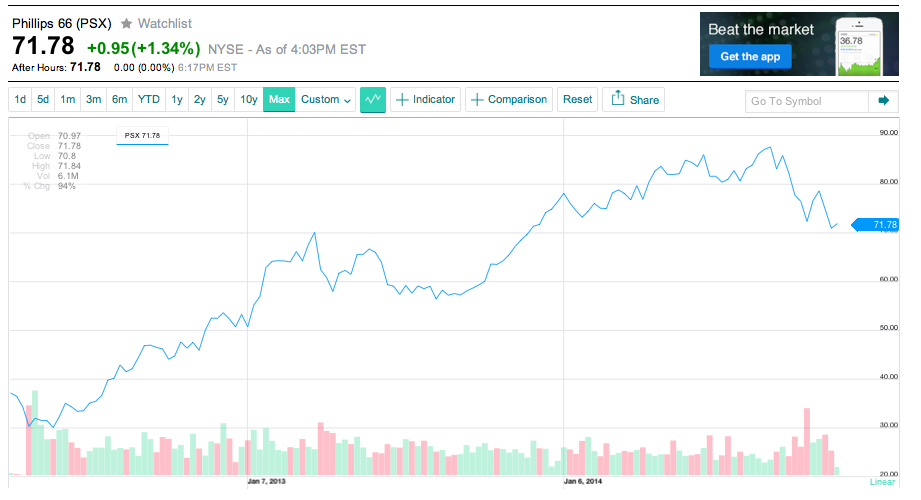
This chart from YahooFinance.com shows the impressive upward move by PSX from its spin off in April of 2012 into 2014.
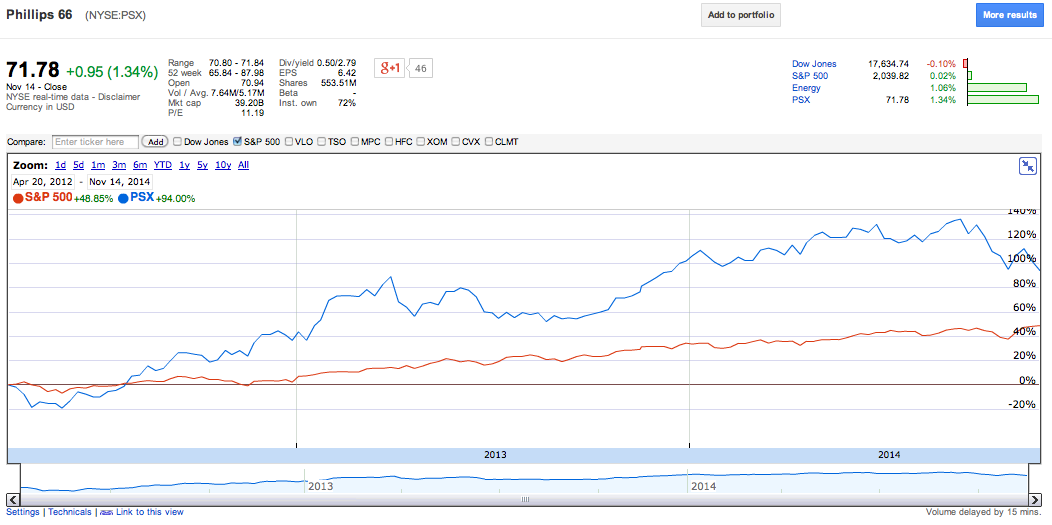
This chart from GoogleFinance.com compares PSX with the S&P 500 Index... which it has outperformed by far since the launch of PSX stock.
However, Buffett sensed that the “run” in PSX that proved so rewarding was (at least for now) behind him, and from a big picture perspective, there might be a better opportunity in one or more different investment vehicles. Since he and his co-investment officers knew PSX inside and out, it was easy to spot one especially attractive asset within PSX: the pipeline services unit called Phillips Specialty Products, Inc. – with offices in Bryan, Texas (largest office) and Oklahoma (researchers) … and sales teams in Belgium and Russia. About that company, Buffett wrote: “I have long been impressed by the strength of the Phillips 66 business portfolio. The flow improver business is a high-quality business with consistently strong financial performance.”
What made Phillips Specialty so attractive? The company produces polymer-based additives specially engineered to move products through pipelines more efficiently and quickly – the result of the additives friction-reducing properties.[7]
Doesn’t sound very exciting, does it? However, consider how it fits within a significant part of the BRK.A empire:
- It owns Burlington Northern Sante Fe Railroad (BNSF) – making money hand over fist in good part due to its strategic location … passing as it does through key areas of oil/gas production in the Bakken Region. The BNSF has boosted shipments of crude oil by making new infrastructure investments to increase capacity… but it will never catch up to demand at the current pace. The bottom line is that the U.S. suffers from a severe paucity of pipeline capacity.[8]
- It also owns MidAmerican Energy Holdings Co. – which (among other operations) runs pipelines… a direct beneficiary of the additives produced by Phillips Specialty.
The key takeaway here is that the U.S. is in desperate need of more pipeline capacity. Therefore, Phillips Specialty is indispensable in providing a product that significantly increases capacity in the present[9]… while government regulators dawdle in granting permission for new lines.
Finally, BRK.A subsidiary Lubrizol, is a perfect fit to manage and maximize the Phillips Specialty operation.
Therefore, in December of 2013, Buffett made PSX an unsolicited offer that its management could not refuse[10]:
BRK.A offered PSX: 19 million of the PSX shares owned by BRK.A
In exchange for: Ownership of Phillips Specialty Products Inc.
PSX found this offer irresistible because it:
1) Enabled management to place more focus on what it considered its “core” business;
2) It contributed significantly toward its previously stated objective to buy back shares;
3) There were no tax consequences.
From Buffett’s point of view, the deal:
1) Offered great synergy within the existing business mix of BRK.A;
2) Left BRK.A with a 1.2% stake in the future growth of PSX;
3) It Was tax-free!
I confess that I do not know the precise basis of all BRK.A shares of PSX. But consider this back of the envelope calculation as a hint of the degree of income tax saved through this transaction:
Initial price of the PSX stock in April 2012 (when it was spun off from COP): $37
Price of PSX in December when the deal was announced: $74.72
Capital Gain if the PSX stock had actually been sold then: $716.68 million
BRK.A tax on that hypothetical gain… at its effective rate of 29%: $207.84 million!
So once again, the Bastion of Barter worked his magic… and that’s what I call “adding shareholder value”!!
MIAMI AREA TV STATION (Channel 10) WPLG:
This story began when Buffett was a high school student who earned money delivering the New York Post to about 400 subscribers.

A picture of Warren Buffett when he was a student at Woodrow Wilson High School... and delivered the Post to nearby residents.
Buffett therefore always had a soft heart for the press industry.
In 1971, Buffett and Charlie Munger visited the heart and soul of the Post – CEO (and matriarch) – Katherine Graham[11]. Within two years, BRK.A had acquired 5% of Post stock, at which point Buffett wrote Graham a letter (a portion of it follows below) that says as much about Buffett as about Graham and the Post [the full letter available at: http://www.futureblind.com/2013/05/dear-mrs-graham/]:
“This purchase represents a sizable commitment to us—and an explicitly quantified compliment to the Post as a business enterprise and to you as its chief executive. Writing a check separates conviction from conversation. I recognize that the Post is Graham-controlled and Graham-managed. And that suits me fine.
“The stock is dramatically undervalued relative to the intrinsic worth of its constituent properties, although that is true of many securities in today’s markets. But, the twin attraction to the undervaluation is an enterprise that has become synonymous for quality in communications. How much more satisfying it is going to be to watch an investment in the Post grow over the years than it would be to own stock in some garden variety company which, though cheap, had no sense of purpose.
“I am additionally impressed by the sense of stewardship projected by your communications to fellow shareholders. They are factual, complete and interesting as you bring your established newspaper standards for integrity to the newer field of corporate reporting.
“You may remember that I was in your office about two years ago with Charles Munger, discussing the New Yorker. At the time I mentioned to you that I had received my financial start delivering the Post while attending Woodrow Wilson High in the mid 1940’s. Although I delivered about 400 Posts per day, my record of loyalty is slightly tarnished in that I also had the Times-Herald route (much smaller—my customers were discriminating) in the Westchester. This was perhaps the first faint sign to keenly perceptive Washingtonians that the two organizations eventually would get together.”[12]
By the end of 1973, Buffett held 10% of the newspaper and was invited to join the company’s board… on which he served for 37 years (until 2011). Buffett’s respect for Graham was reciprocated. Ms. Graham wrote in her memoir that, from their very first meeting, she “instinctively trusted him”. She also noted that Buffett’s purview of Post financial matters helped ensure that (among other things) the employees’ pension fund became vastly overfunded!
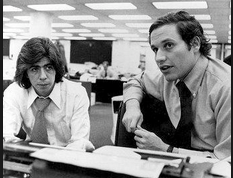
It is worth remembering that the peak of the investigative journalism work of Carl Bernstein (l) and Robert Woodward (r) occurred during the time Buffett performed his due diligence on the Washington Post and became a major shareholder.
It surely is no revelation to you that the mainstream newspaper business has been a dreadful investment for quite a long time. So you are well within your rights to question Buffett’s investment acumen for hanging on to Post stock for four decades. However, consider the following part of Buffett’s genius:
Buffett paid $11 million for his stake in the company, which by 2014 was worth about $1.1 billion.
In addition, over these decades, BRK.A received dividends – dividends that in 2013 alone amounted to $17 million. Note that last year’s dividend was 150% of the basis BRK.A held in the stock!!
But more importantly, Buffett recognized the value of relationship and stewardship – his respect for Graham and his (however small) part in the stewardship of a once powerful brand (and force in society). As Buffett once expressed it: “I can afford to be sentimental.”
However, the days of sentiment attached to the Post diminished a bit with the death of Katherine… and likely totally evaporated once the Washington Post itself was sold in 2013 (to Amazon (AMZN) CEO, Jeff Bezos). What was left after the sale of the newspaper was a conglomerate (Graham Holdings Co. (GHC)) consisting of broadcast assets and education-related businesses.
This spring, Don Graham (the head of GHC) and Buffett put their heads together regarding the assets tied up in their respective companies and agreed upon a fairly elaborate “Barter” transaction. By March the two gentlemen announced the following details (revealed in an 8-K filing with the SEC… the precise share figures will be adjusted in accordance with share price as of the transactions closing date):
From GHC to BRK.A:
Miami TV station WPLG (tentatively valued at $364 million);
Berkshire stock held by the company (valued at $400.282 million);
Cash: approximately $327.718 million).
From BRK.A to GHC:
Stock: 1,625,747 shares of GHC shares (worth about $1.144 billion, according to the SEC filing)
For Berkshire, the deal provided it with a solid, fully owned operating asset (that can fit within its existing media operations), saved BRK.A a lot of income tax on stock it had held since the 1970’s, and still left Buffett with over 1% of GHC (for old times’ sake; after all, Buffett “can afford to be sentimental”).
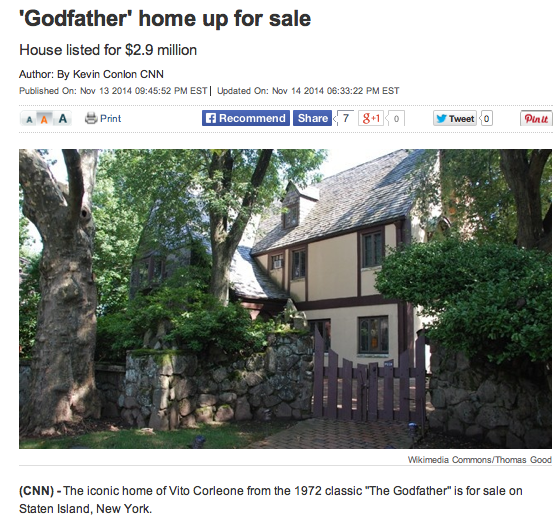
Bit of trivia: While trolling through the WPLG website, I discovered this photo of the very home at which the wedding of Don Corleone's daughter took place -- used in the long opening scene of Godfather I!! The home is currently on the market waiting for a buyer!
How much was the tax savings? If BRK.A had actually sold the GHC stock, this is my back of the envelope calculation:
GHC stock sold for: $1.1 billion
BRK.A basis in stock $ 10 million
At the standard U.S. Corporate tax rate (35%), the combined federal and state taxes postponed through this barter transaction have been widely reported at $425 million.
However, as I suggested earlier, the “effective” tax rate would provide a more accurate calculation of savings. At a 29% effective rate, the federal tax avoided (for now) would be $316 million. [Note that GHC itself saved (according to reports) an additional $250 million.]
So the “Bastion of Barter” struck again, simultaneously “adding shareholder value” and putting off the outstretched (greedy) hand of Uncle Sam!! It takes a special type of investor to envision these type of deals and then manage to actually execute them!
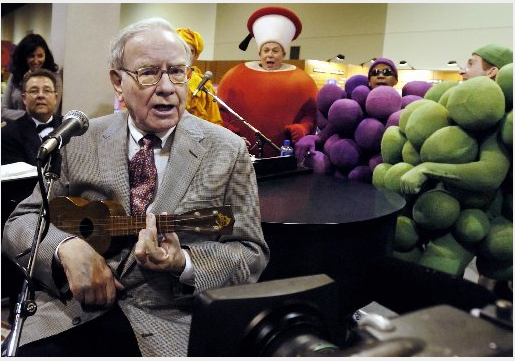
Talk about UNIQUE! How many internationally known, universally respected CEO's of a huge corporation would sit in front of underwear mascots (Fruit of the Loom) and play a ukelele?!
There is no denying that Warren Buffett is in a class by himself when it comes to the range of what he has done, and can do, with regard to investment vision, strategy, and execution! So the next time you read some nonsense article about how Buffett has “lost his touch” or has become an unexciting portfolio manager, just think to yourself: “Hooey!”[13]
INVESTOR TAKEAWAY:
Admittedly, neither you nor I can ever dream of executing the investment strategies of Warren Buffett – as illustrated above. However, there are a number of potentially helpful teaching points available to us from these stories:
1) We will be wise to remember that mere profit or loss is not all there is to investing. What is ultimately important is our effective, after tax, net profit or loss!!
a) Therefore, we should build our trading strategy around such factors as:
i) Our personal effective tax rate… particularly with regard to where we park our cash in between investments/trades. Any vehicle that results in an attractive after tax yield should be evaluated relative to a mere (albeit convenient) money market fund or bank account.
ii) ETFs are more tax efficient than mutual funds in at least two ways:
- ETF managers can trade in and out of stocks without (necessarily) incurring a tax liability for the fund;
- By law, mutual funds must comply with requirements regarding the end of year taxable distributions[14]… but ETF’s do not fall under those regulations. Therefore, an investor only incurs a taxable gain (or loss) at the time of sale.
b) I am not in a position to weigh in on their value, but there are certain funds that represent themselves as being managed to minimize tax liability (ie. maximize “tax efficiency”). You might find researching such funds to be fruitful in your particular circumstance.[15]
2) These stories illustrate some of the unique attributes of Warren Buffett and his style of investing.
a) The stories may or may not persuade you that Berkshire Hathaway is a stock worthy of some of your investable assets;
b) Unless you are in the “HNW” (“high net worth”) category, you’ll want to focus on BRK.B shares instead of the $218,000+ per share BRK.A shares.
3) Regular readers will recall that the “Tax Inversion” strategy that has been much in the news for years now was/is predicated upon the detailed provisions of legislation enacted into law by the U.S. Congress in 2004.
[See:
- https://www.markettamer.com/blog/tax-evasion-or-inversion-a-short-history-case-study;
- https://www.markettamer.com/blog/would-you-invert-a-view-from-the-ceos-chair;
- https://www.markettamer.com/blog/what-makes-a-company-american.]
a) Treasury Secretary Lew and President Barack Obama have made it abundantly clear that, although those “Inversions” may have been “legal”, they are neither right nor acceptable.
b) Therefore, they initiated steps to unilaterally prevent future “Inversions”, despite those corporate acquisitions being fully legal.
c) Lew and Obama regularly refer to “Inversion” being unpatriotic because it is a blatant act of tax evasion.
d) I will grant that Mr. Buffett has never even dreamed of moving Berkshire’s corporate headquarters away from Omaha (much less overseas)… however, God bless him, Buffett has managed, through just the three transactions detailed in this article, sidestep over $1.8 billion in federal taxes!! As Everett Dirksen (famed Illinois senator from decades ago) would note: “that’s real money!”
e) And yet I have never heard either Lew or Obama utter one negative word about Mr. Buffett or any of his tax saving transactions.
i) Perhaps this reminds us that it never hurts to have “friends in high places” (referring to Buffett’s helping Obama and the Treasury in 2011!).
II) Or perhaps it just reminds us that
- Politicians are rarely if ever held to account when she/he is not logical, consistent, or fair … and
- A corporation acquiring a foreign firm and moving its tax domicile to that country is an extremely easy (popular) target for a politician to rant and rave against… but taking on the popular and venerable Warren Buffett would be political suicide!
iii) The bottom line is that, all too often, government is fickle, feckless, foolish, and frustrating[16]… earning the grade of “F”!!
4) If you are partial to a well-run company that has demonstrated its commitment to maximizing shareholder value, you could do much worse than consider PSX:
a) Since the day it was spun off in 2012, PSX has:
- Bought back more than 10% of its stock;
- Increased its dividend by 150%;
- If profit continues to grow and share count shrinks, an investor should be rewarded by price appreciation and/or dividend increases.
b) If you were so inclined to buy it, GHC is publicly traded.
- I wouldn’t say it is a bad investment;
- However, I will describe it as “thinly traded”.
- And one share of GHC runs over $800
c) Of course, it goes without saying that you can not “buy” Duracell stock (it doesn’t exist) … but you can go to your local store and pick up a pack of its batteries.
- Mr. Buffett will be grateful!
DISCLOSURE:
The author does not currently own BRK.A, BRK.B, PSX, COP, GHC, or PG (although he has, in the past, owned all but BRK.A and GHC). The author does regularly use Duracell batteries. Nothing in this article is intended as a recommendation to buy or sell anything. Always consult with your financial advisor regarding changes in your portfolio – either subtractions or additions.
FOOTNOTES:
[1] The Buffett Rule is part of a tax plan proposed by President Barack Obama in 2011.
[2] Note that I used the word “suspending” and not evading… since some day, tax will be due in some later transaction that requires the use of a “basis” adjusted by gain/loss from all prior related transactions.
[3] OK… so you protest that DaVita doesn’t exactly spring to mind as a “top” U.S. brand…. But, wait, you must be too young to remember one of the greatest hits of 1968 (and all time) by Iron Butterfly (In A Gadda DaVita)
https://www.youtube.com/watch?v=UIVe-rZBcm4 [Yes, I modified the spelling… but you get the point!)]
[4] I hasten to add that BRK.A has a cash horde exceeding $62 billion, so a sale of PG would hardly have been necessary!!
[5] No, that is not a typo – it is $336 MILLION!
[6] At one point totaling 84 million shares.
[7] The product contains a chemical agent that breaks up debris, thereby reducing drag!
7 Think “Keystone Pipeline” here… still held up by Washington DC despite key authorities approving it along the now interminable process.
[9] Making oil pass through pipelines more efficiently increases capacity by significantly expanding throughput per minute
[10] Of course, Buffett’s “offer you can’t refuse” did not include the infamous Godfather horsehead !!
[11] She died in 2001.
[12] I can’t help but imagine that part of what impressed Buffett about Graham is that she had the guts to support Bob Woodward and Carl Bernstein in their now legendary investigative journalism regarding Watergate – when (needless to say) the “powers that be” put considerable pressure on her to stop them! Those concurrent elements of his interest likely re-ignited his nostalgia regarding his high school days as delivery boy!
[13] Poor Mr. Buffett has become the victim of far too many superficial, nonsense articles … with publications trading on his name recognition to secure “eyes on the page”, “clicks”, and or magazine sales.
[14] Tax law requires that mutual funds pay substantially all net investment income and net capital gains to their investors, who may elect to receive cash or reinvest in additional shares of the fund.
[15] The term “tax managed” often appears in the name of such funds.
[16] Oh… and don’t forget “felonious”.
Related Posts
Also on Market Tamer…
Follow Us on Facebook

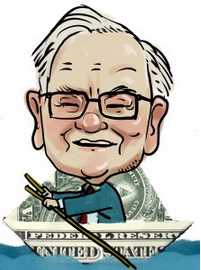



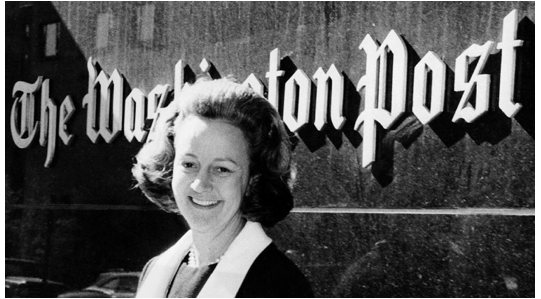

 If You'd Invested $1,000 in Shopify Stock 10 Years Ago, Here's How Much You'd Have Today
If You'd Invested $1,000 in Shopify Stock 10 Years Ago, Here's How Much You'd Have Today
